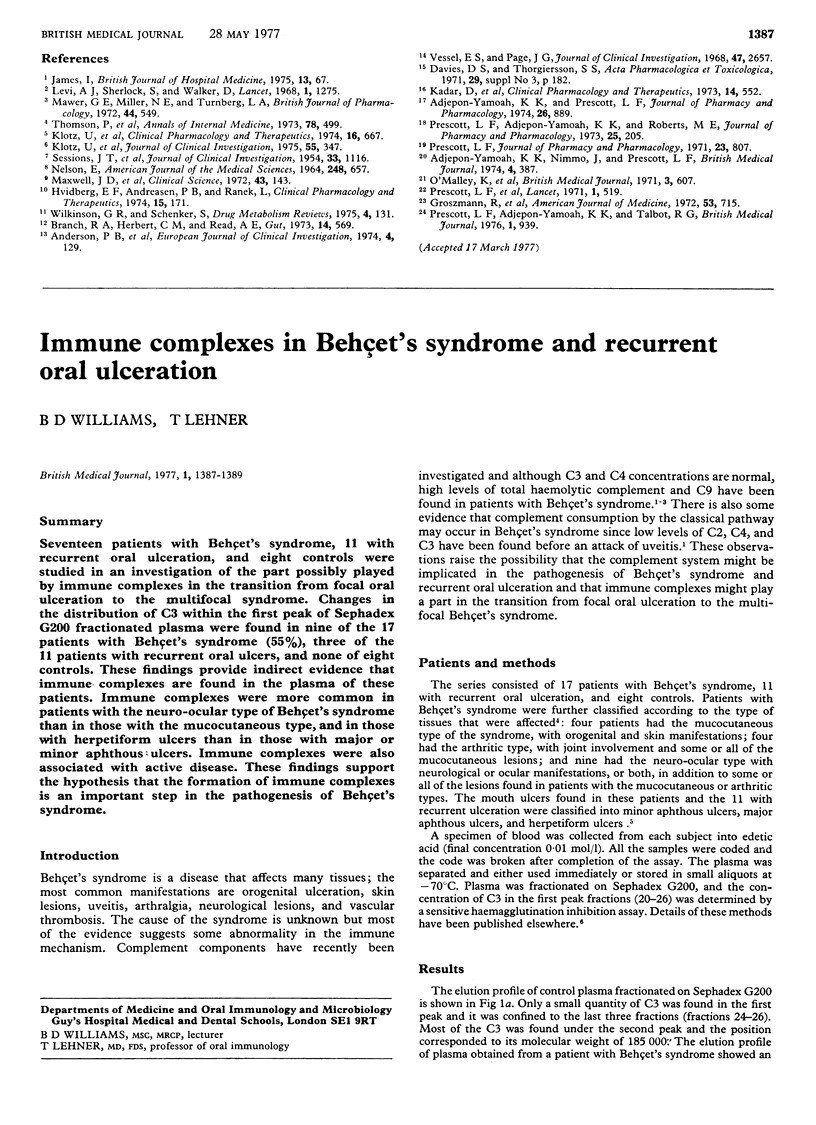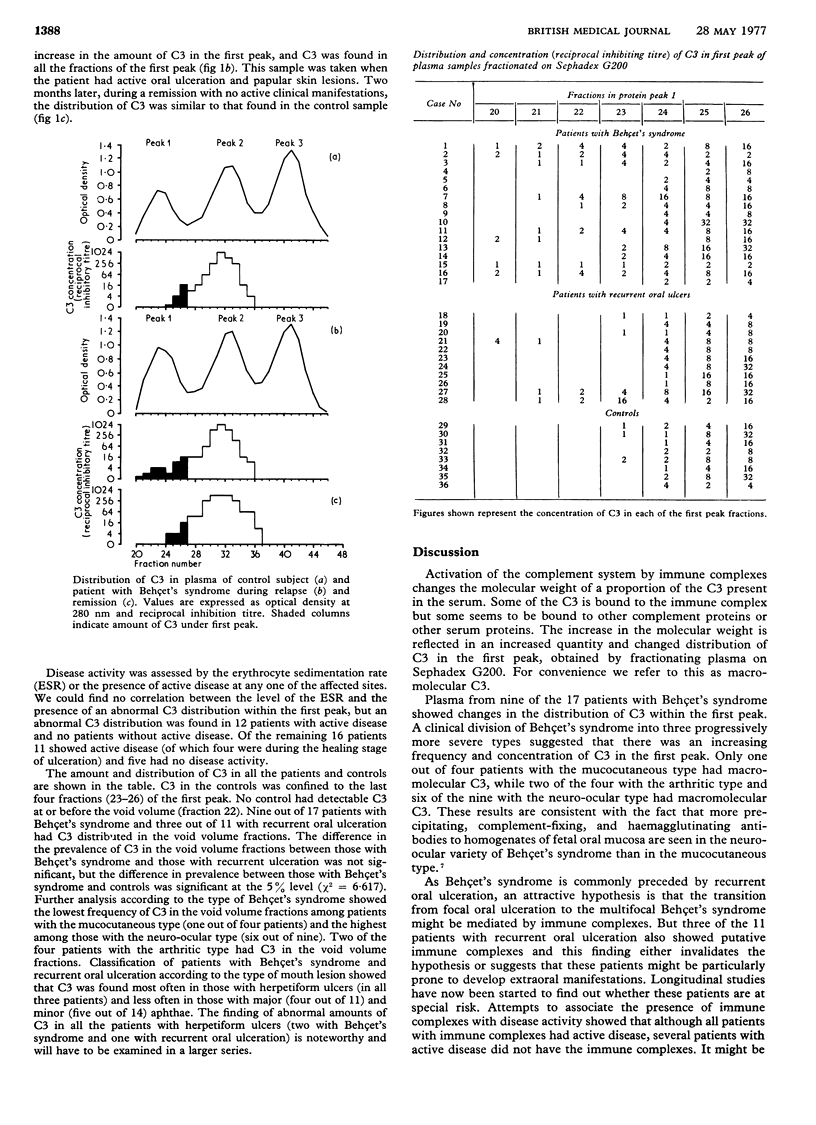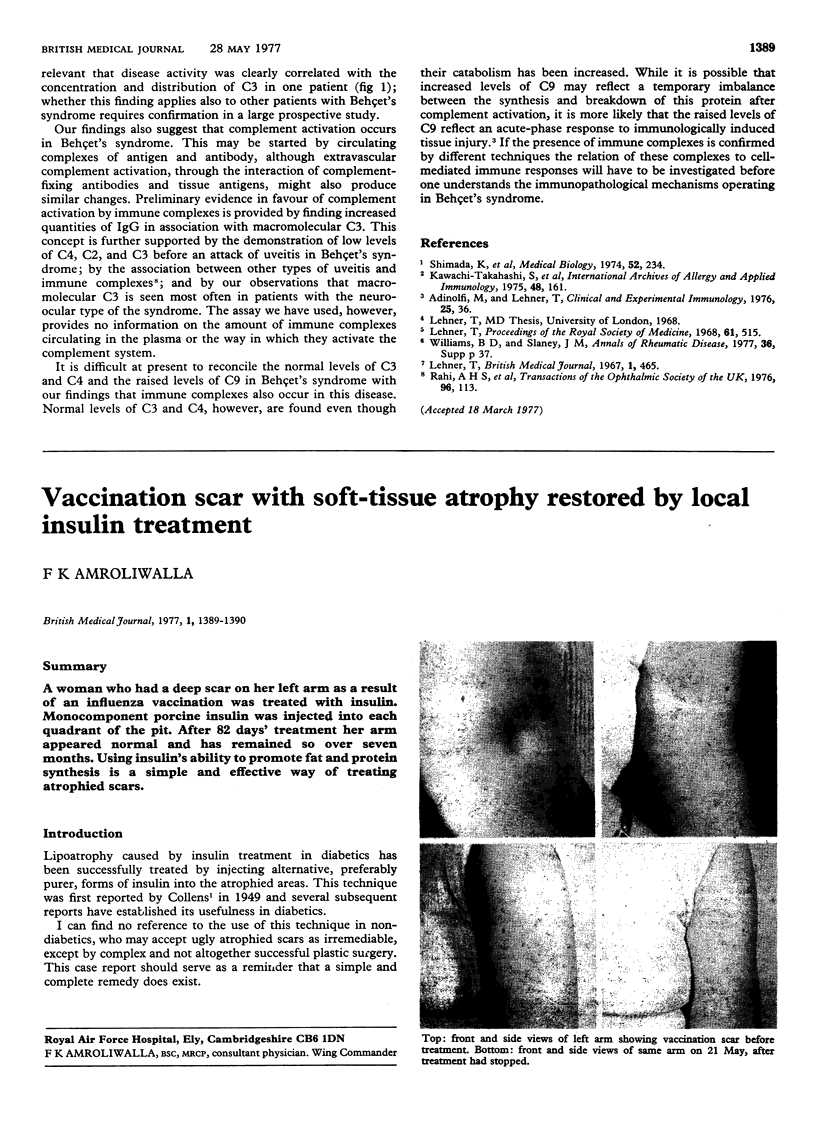Abstract
Seventeen patients with Behçet's syndrome, 11 with recurrent oral ulceration, and eight controls were studied in an investigation of the part possibly played by immune complexes in the transition from focal oral ulceration to the multifocal syndrome. Changes in the distribution of C3 within the first peak of Sephadex G200 fractionated plasma were found in nine of the 17 patients with Behçet's syndrome (55%), three of the 11 patients with recurrent oral ulcers, and none of eight controls. These findings provide indirect evidence that immune complexes are found in the plasma of these patients. Immune complexes were more common in patients with the neuro-ocular type of Behçet's syndrome than in those with the mucocutaneous type, and in those with herpetiform ulcers than in those with major or minor aphthous ulcers. Immune complexes were also associated with active disease. These findings support the hypothesis that the formation of immune complexes is an important step in the pathogenesis of Behçet's syndrome.
Full text
PDF


Images in this article
Selected References
These references are in PubMed. This may not be the complete list of references from this article.
- Adinolfi M., Lehner T. Acute phase proteins and C9 in patients with Behcet's syndrome and aphthous ulcers. Clin Exp Immunol. 1976 Jul;25(1):36–39. [PMC free article] [PubMed] [Google Scholar]
- Kawachi-Takahashi S., Tanaka K., Takahashi M., Kawashima T., Shimada K. Determination of serum C9 level by immunodiffusion. Elevation in patients with infectious or allergic skin diseases. Int Arch Allergy Appl Immunol. 1975;48(2):161–170. doi: 10.1159/000231302. [DOI] [PubMed] [Google Scholar]
- Lehner T. Autoimmunity in oral diseases, with special reference to recurrent oral ulceration. Proc R Soc Med. 1968 May;61(5):515–524. [PMC free article] [PubMed] [Google Scholar]



